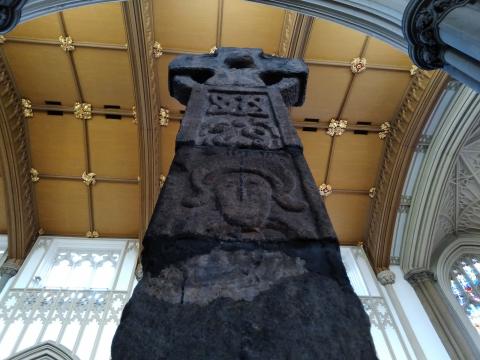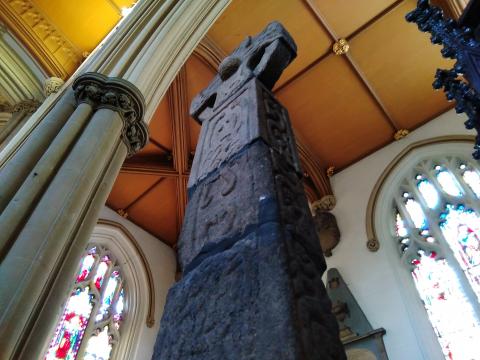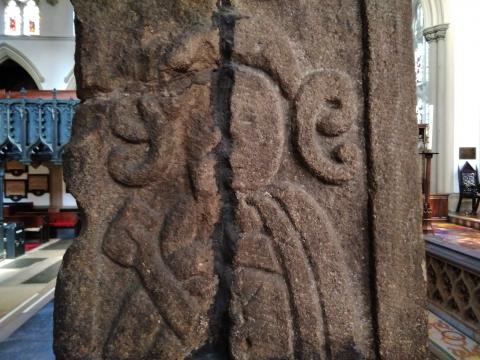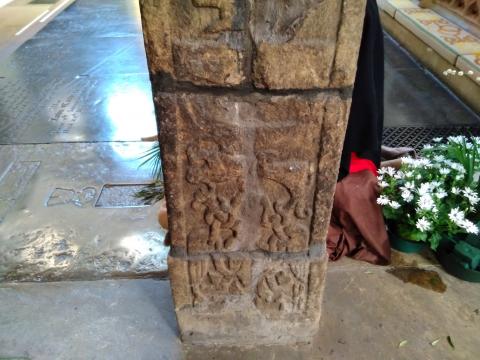The Leeds Cross

In Leeds Minister is an ancient Anglian cross, cobbled together from various fragments found in the previous building, when it was demolished and rebuilt in 1838. There is some token Christianity upon it, but, more famously, it retells the legend of Wayland the Smith. This demonstrates just how questionably 'Christian' late Saxon England really was, with its blending of pagan myth with Christian symbolism.
Wayland was a smith who was captured, crippled and enslaved by Niðhad, king of Jutland. Forced to make his captor all manner of items, he manages to kill his two sons, turning their skulls into cups, their teeth into brooches and their eyes into jewels- which he courteously sends to the king and queen to use and wear. He then rapes the murdered sons’ sister and creates a flying machine from which he can escape, but not before informing Niðhad of his actions, which causes him to weep and wail. This tale of grisly revenge and violent retribution would doubtless have satisfied early medieval man’s sense of honour and propensity to violence.
Yet the cross head above it is also a sign of vengeance. The Father avenged all our sin upon the Son. Unlike Wayland, who understandably but horrifically exacts retiribution on his tormentor, the Triune God revenged upon Himself the punishment our crimes deserve. I suspect the Saxon Church underemphasised the primacy of the atonement, so the wondrous beauty of the cross- head might have been lost on those more inclined to cheer on Wayland in those scenes of cruelty. Look up from the bickering, the malice, the hatred of this unjust world; behold the perfect justice and awesome benevolence of the Triune God.
…by Him to reconcile all things to Himself, by Him, whether things on earth or things in heaven, having made peace through the blood of His cross. Colossians 1:20



- Log in to post comments


 Sunday Worship 10.45am & 6.00pm
Sunday Worship 10.45am & 6.00pm